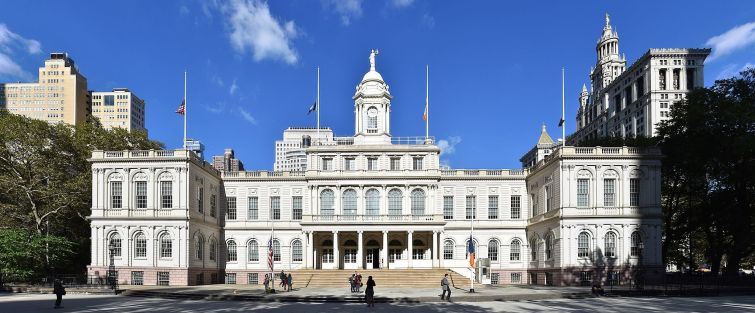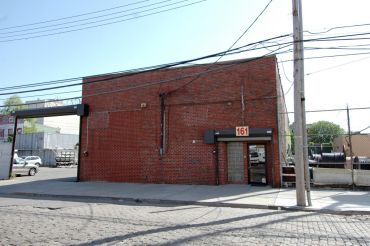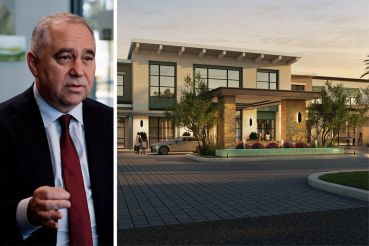Deal Reached for Midtown East Rezoning
Millions of square feet of new development possible after City Council Land Use Committee vote
By Aaron Short July 27, 2017 4:54 pm
reprints
The New York City Council and the de Blasio administration have reached a deal allowing developers to construct millions of square feet of new office space in Midtown Manhattan after four years of fraught negotiations.
The City Council Land Use Committee today approved a plan to change the zoning code permitting landmarks located in a 78-block section of Midtown East to sell unused air rights above their properties to sites within the district, enabling the construction of taller, denser office towers.
The city will collect a fee from an air rights transaction—a minimum of $61.49 per square foot, or 20 percent of the sale—and put it toward the construction of new public plazas and pocket parks. The owners’ landmarks would keep the remainder of the profits for historic preservation costs. This is significantly lower than what had originally been proposed, $78.60 per square foot for the air rights, and city leaders touted the compromise while pro-development groups and building owners remained disappointed.
There are 33 landmarks in the area, bordered by Third and Madison Avenues from East 39th to East 57th Streets, with 3.6 million square feet of unused air rights. Normally a property can sell air rights only to neighboring sites but the rezoning allows for air rights to be transferred throughout the Midtown district.
The change will allow developers in the district to also increase the density of their projects if they are near transit hubs as long as they pay for improvements to subway stations in or near the district first.
All told, the city estimates the plan would spur 6.5 million square feet in new commercial office space, creating 28,000 new permanent jobs and 23,000 construction jobs over the next two decades.
The City Council and Mayor Bill de Blasio still need to sign off on the agreement following the Land Use Committee’s vote Thursday afternoon but their approvals (coming in August) are a formality.
The rezoning has several rules and concessions allowing developers to boost the density of their sites, including:
* $50 million upfront in seed money from the city for public spaces and improvements.
* $500 million in estimated improvements for new street-level exits entrances, widened staircases and other capital construction at Lexington Avenue/ 53rd Street, 59th Street, Fifth Avenue/53rd Street, 47th-50th Streets–Rockefeller Center, 42nd Street–Bryant Park and Grand Central subway stations.
* Widening sidewalks and restricting vehicle access on East 43rd Street between Lexington and Third Avenues.
* $350 million for at least 16 new privately owned public spaces. Sites larger than 65,000 square feet are obliged to dedicate 10,000 square feet for public space.
* Requiring 75 feet of minimum street frontage for buildings that use the new zoning rules.
* A five-block section of Third Avenue from East 46th to East 53rd Streets would be excluded from the plan.
* Pfizer’s existing 675,000-square-foot headquarters on 235 East 42nd Street was increased to 15 from 10. (The company is looking at six or seven different places in the city to relocate, and an FAR increase makes their building more marketable to potential buyers.)
Manhattan Democratic Council member Dan Garodnick, who led negotiations with both the Bloomberg and de Blasio administrations, said only five office buildings have been built in East Midtown since 2001 but the new agreement was “unlocking the potential” of the neighborhood.
“We know what tenants are demanding for modern office buildings and we want to make sure developers in East Midtown have the ability to upgrade and give them what they need,” he said at a press conference outside City Hall following the Council vote. “We have set a framework of opportunity that will allow the private sector to go develop and do things to benefit the people they will find space for.”
And Deputy Mayor Alicia Glen said the city “needed to make smart investments in the neighborhood if it wants to have strong job growth.”
“Everybody understood there was a good and compelling reason to get this done,” she added.
But other stakeholders called the rezoning a “step backward.”
Real Estate Board of New York President John Banks believes the city’s air rights tax is too high and would discourage development.
“Today’s agreement is a missed opportunity to ensure more, rather than less, commercial development. As a result it is less likely the public improvements that are needed in Greater East Midtown will be achieved,” he said in a statement.
And the Archdiocese of New York, whose St. Patrick’s Cathedral is one of the most iconic landmarks in the city, was “disappointed” the city kept the minimum payment in the proposal.
“This will negatively impact the city’s ability to raise money for public realm improvements and landmarks’ ability to fund preservation efforts,” a spokeswoman said in a statement.
Plus the fact that the city is asking for significantly less for the air rights than the figure originally floated suggests that there isn’t the same hunger for development in Midtown that there had been when the rezoning was first discussed four years ago.
“Midtown is no longer the center of the world,” said Robert Knakal, chairman of New York Investment Sales at Cushman & Wakefield (CWK). “The appetite for office space is much more geographically distributed than it has ever been. You have this proliferation of creative office space in neighborhoods that have not historically been office locations like Long Island City and Bushwick.”
The market, as always, will have the last say.


